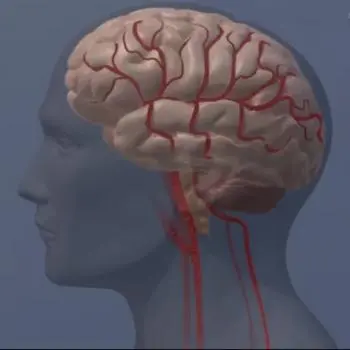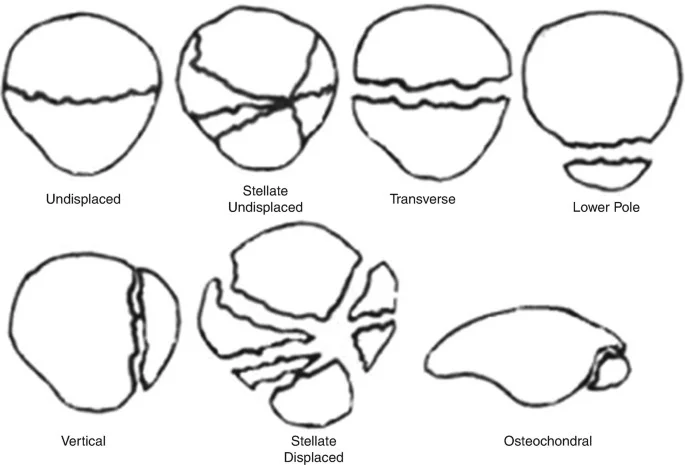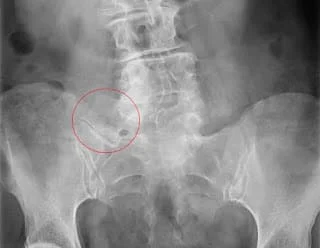Central Nervous System Vasculitis
What is vasculitis?
Vasculitis is the inflammation (swelling) of the blood vessels, the network of hollow lines that bring blood throughout the body. Vasculitis can involve medium-sized blood vessels (arterioles and venules), very small blood vessels (capillaries), or large blood vessels (arteries and veins). If blood flow in a vessel with vasculitis is decreased or stopped, the regions of the body that accept blood from that vessel start to die.
What is Central nervous system vasculitis?
Central nervous system (CNS) vasculitis is inflammation ( swelling ) of blood vessel walls in the brain or spine. (The brain and the spine create the central nervous system) Central Nervous System Vasculitis frequently happens in the next situations:
Accompanied by different autoimmune conditions like systemic lupus erythematosus, dermatomyositis, and infrequently, sarcoidosis and rheumatoid arthritis.
Infection, like viral or bacterial.
Systemic (involving the whole body) vasculitic diseases, which contain granulomatosis with polyangiitis GPA), microscopic polyangiitis, eosinophilic granulomatosis with polyangiitis (EGPA), cryoglobulinemic vasculitis, and Behet’s syndrome).
It can also happen without any associated systemic disease. In this circumstance, the vasculitis is only limited to the brain or the spinal cord and is guided to as primary angiitis of the CNS (PACNS).
Epidemiology
Examinations that represent the precise epidemiology of this rare disease have not been accomplished, and the only available information indicates an annual incidence rate of 2.4 patients per 1 million person-years. The disease has also been seen to have an equal distribution among both sexes and the median age of diagnosis of approximately 50 years.
What causes central nervous system vasculitis?
How the vessels in the brain evolve inflamed is not completely clear. In some vasculitic conditions, abnormal antibodies (autoantibodies) strike white blood cells, which strike vessel walls and generate inflammation and destruction of the vessel wall. Infection induced by a virus can also generate Central Nervous System Vasculitis.
What are the symptoms of central nervous system vasculitis?
Symptoms of Central Nervous System Vasculitis can contain the following:
- Extreme headaches that last a long time.
- Strokes or transient ischemic episodes (“mini-strokes”).
- Forgetfulness or confusion.
- Weakness.
- Eyesight issues.
- Seizures
- Encephalopathy (swelling of the brain), can display as a change in a mood or nature and a reduction in the level of consciousness.
- Sensation abnormalities.
Differential Diagnosis for CNS Vasculitis
The differential diagnosis for Central Nervous System Vasculitis is broad and contains the:
- Infections, which can simulate Central Nervous System Vasculitis
- Neoplasms
- Systemic inflammatory diseases
- Genetic disorders
Infectious CNS vasculitis may happen due to infectious etiologies, like as:
Human immunodeficiency virus (HIV)
Bacterial etiologies, like spirochetes and subacute bacterial endocarditis
Fungal etiologies, like aspergillosis.
Intracranial atherosclerosis and embolic phenomenon are two essential mimics of Central Nervous System Vasculitis and should be carefully evaluated in the differential diagnosis. Also, reversible cerebral vasoconstriction syndromes (RCVS) like migrainous vasospasm, Call-Fleming syndrome, and postpartum angiopathy are contained in the differential diagnosis. Persons showing RCVS generally report having a record of thunderclap headaches.
How is vasculitis diagnosed?
Analyzing CNS vasculitis poses a challenge for physicians or doctors. Many of the essential symptoms of Central Nervous System Vasculitis are transmitted by other conditions and infections, so these mimics must be judged. There is no single diagnostic examination for CNS vasculitis, so your doctor or physician will evaluate several factors, involving a detailed medical record, laboratory tests, a physical assessment, and specialized imaging examinations. A biopsy of tissue from blood vessels in the brain or spine is generally needed to verify a diagnosis.
If Central Nervous System Vasculitis is doubted, your doctor or physician will probably order the following examinations:
Lab work: Blood tests are often normal in PACNS vasculitis, but may be abnormal if reflecting another underlying condition.
Examination of the spinal fluid: A specimen of the cerebrospinal fluid (which encircles the brain) is dismissed via a spinal tap and examined for infection and signs of inflammation.
Diagnostic imaging: Computed tomography (CT) scans and magnetic resonance imaging (MRI) create pictures that can assist determine abnormalities of the brain, blood vessels, spinal cord, and different organs and tissues.
Cerebral angiogram: An angiogram sees blockages of blood vessels using X-rays carried during the injection of a contrast mechanism.
Biopsy: This surgical process extracts a small tissue specimen from a blood vessel or an involved organ, which is analyzed under a microscope for signs of inflammation or tissue harm. Because further diseases can cause similar brain vessel abnormalities as Central Nervous System Vasculitis a brain biopsy may be the best way to create a definitive diagnosis.
How is central nervous system vasculitis treated?
Central Nervous System Vasculitis is generally treated in phases.
The initial stage is called induction therapy. Here high-dose steroids are generally administrated, frequently intravenously, with or without additional immunosuppressive drugs like cyclophosphamide or mycophenolate mofetil drug that reduces the immune system’s reaction to autoimmune conditions. Then steroids are tapered off over six – 6 months.
When someone is in remission they enter a maintenance stage where cyclophosphamide (if utilized in the induction phase) is changed to a further immunosuppressive drug like mycophenolate mofetil. Low-dose steroids may be utilized in the maintenance stage. Therapy must be persisted for a prolonged period, occasionally for life.
If the person has another condition (like lupus) or systemic vasculitis, then therapy should also contain guidelines for the precise state.
Side effect
The drugs used to manage Central Nervous System Vasculitis have potentially severe side effects, like as lowering your body’s capability to fight infection, and potential bone loss (osteoporosis), among others. Thus, it’s essential to see your doctor or physician for routine checkups. Drugs may be defined to offset side effects. Infection prevention is also essential. Speak to your doctor or physician regarding obtaining pneumonia vaccination, a flu shot, and/or shingles vaccination, which can decrease your risk of infection.
Physical and occupational treatment can be necessary for persons with motor or gait deficiencies.
How Is CNS Vasculitis Prevented?
Because Central Nervous System Vasculitis is frequently associated with a triggering condition or infection, immediate therapy of underlying conditions and avoiding infections is the finest preventive strategy.
To save yourself from the familiar infections that may generate vasculitis, bring these actions:
Vaccinate yourself and your kids against typical viruses like measles, rubella, mumps, and chickenpox. If you’re touring foreign destinations, ask your doctor or physician if you require vaccinations against locally prevalent bacteria, viruses, or protozoa.
Wash your hands and practice fine hygiene to control the spread of viruses and bacteria. Instruct your kids on these practices, also.
Don’t transfer food, utensils, or beverages.
FAQ
Can CNS vasculitis be cured?
There is no treatment for Central Nervous System Vasculitis at this time, yet, it is treatable. Earlier diagnosis and therapy are necessary to control potentially life-threatening loss of brain role or stroke. Further conditions frequently have the exact symptoms as Central Nervous System Vasculitis, so proper diagnosis includes ruling out these states.
Can you live a full life with vasculitis?
Vasculitis is a rare disease that can be hard to analyze, yet, many people with vasculitis recover and go on to live fit, normal lives. Accurate diagnosis and adequate therapy are essential to control long-term or significant harm to the body and involved organs.
Is vasculitis very serious?
Some kinds of vasculitis can be extreme, inducing harm to major organs. Blood clots and aneurysms. A blood clot may develop in a blood vessel, blocking blood flow. Infrequently, vasculitis will generate a blood vessel to weaken and bulge, creating an aneurysm.
Can you fully recover from vasculitis?
There is presently no treatment for vasculitis, but early analysis and therapy are critical for assisting to reduce symptoms and slow the progression of the condition. Kinds of vasculitis include Giant cell arteritis. Cryoglobulinemia.
Can vasculitis be stopped?
Vasculitis is treatable, and many persons conduct remissions via therapy. It is essential to balance the types of drugs required to control the condition and the risk of side effects that those drugs frequently bring.







